U6 - Quadrilaterals
1/22
There's no tags or description
Looks like no tags are added yet.
Name | Mastery | Learn | Test | Matching | Spaced |
|---|
No study sessions yet.
23 Terms
U6: Rectangles are also...
-parallelograms
-quadrilaterals
U6: Trapezoid median
Segment between the midpoint of the non parallel sides of a trapezoid
(Average of the lengths of the 2 bases) —> Also parallel to the bases
Median = (b1 + b2)/2
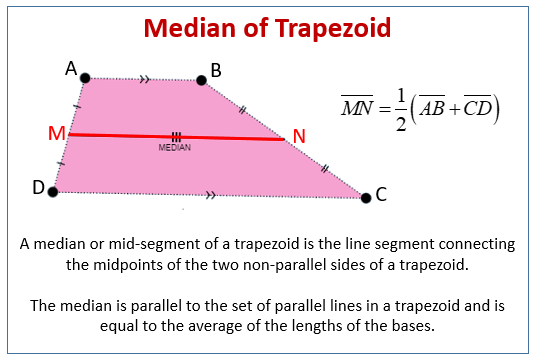
U6: If a parallelogram has congruent diagonals then its a ———-
If it has perpendicular diagonals it's a ———
If both it's a ——-
Rectangle
Rhombus or kite
Square
U6: Converting units
Multiple fractions till the units cancel out (top and bottom)
Multiply by fractions/units equivalent to 1

U6: Kite/Rhombus area formula
(D1xd2)/2 (splitting into triangles)
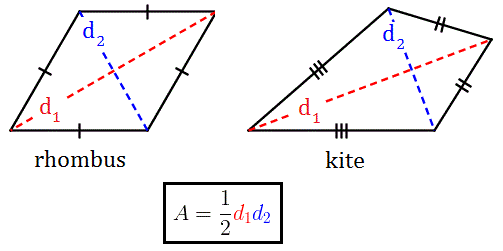
U6: Trapezoid area formula
(b1+b2)h/2
—> (two parallelograms)
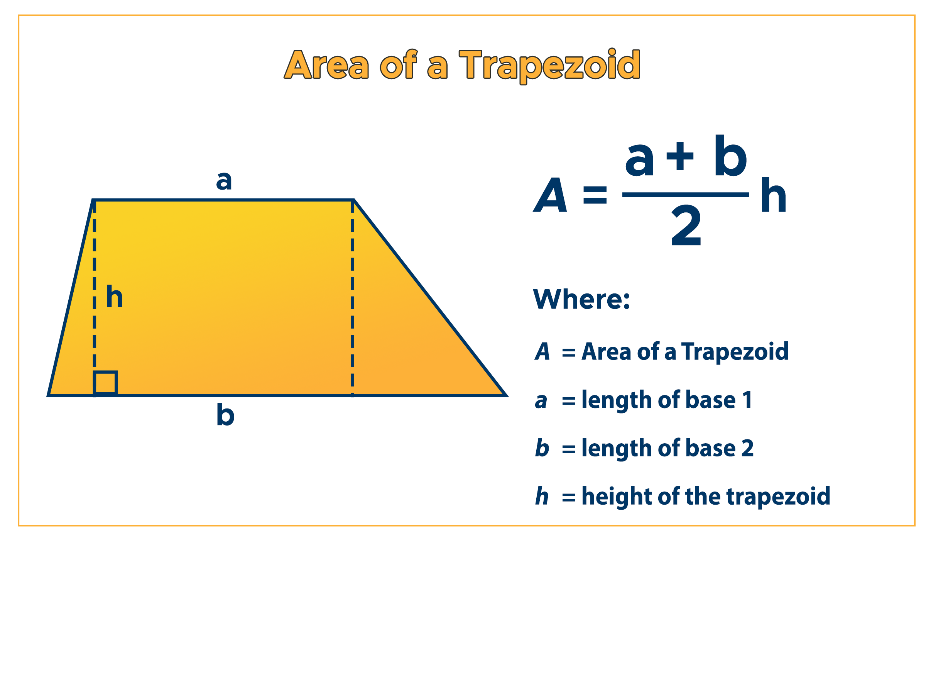
U6: Perpendicular Bisector
A line that bisects a segment (breaks into two congruent parts), and is perpendicular to the segment (forms right angles)
Equidistant from endpoints.
Perpendicular to base.
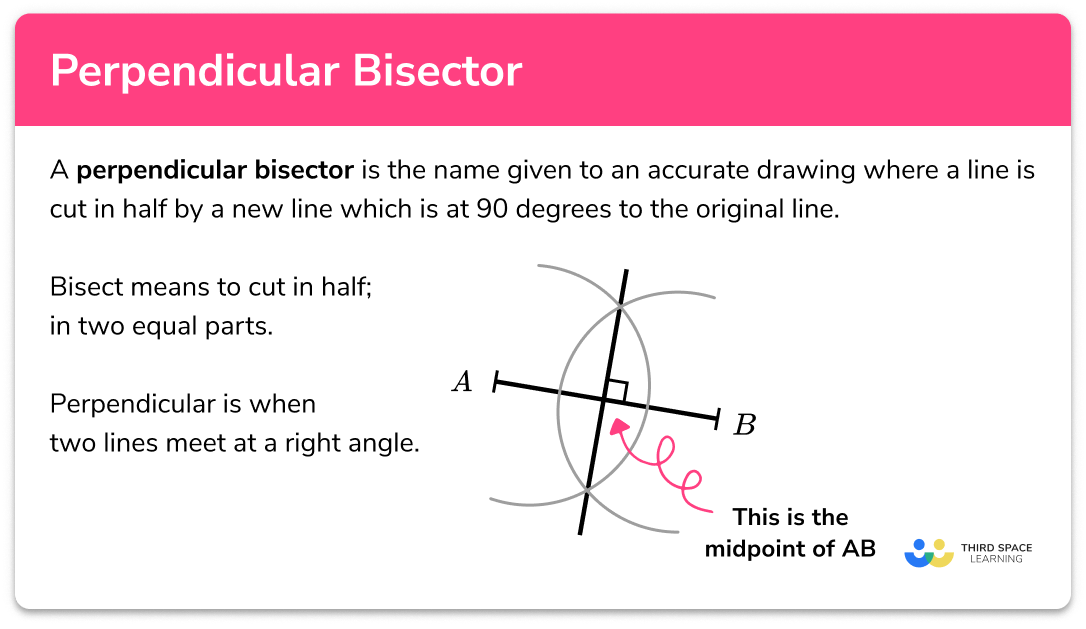
U6: If a parallelogram has congruent diagonals it is a _________
If a parallelogram has perpendicular diagonals it is a ________.
If it's both that it's a _________.
Rectangle, rhombus, square
U6: Congruent Supplements Theorem
If two angles are supplementary to the same angle (or to congruent angles), then they are congruent.

U6: How are base and height related on a triangle?
Base and height are perpendicular. Height is also called altitude
-base can be any side

U6: Cavaliers principle
2 figures have the same area if they have the same height and width at every point along that height
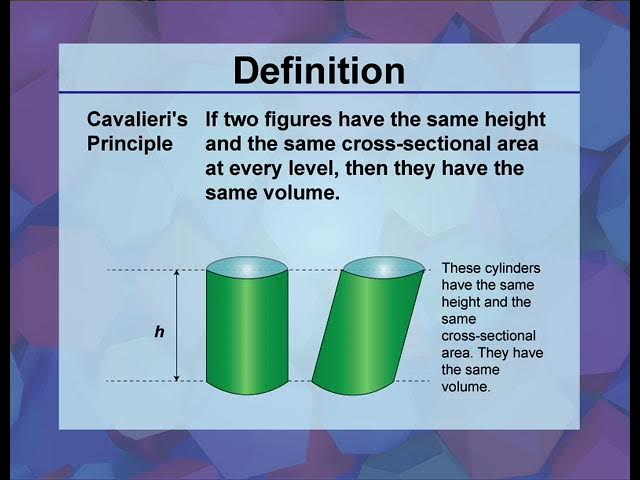
U6: Rectangle (characteristics/how to prove)
Quadrilateral with 4 right angles
Diagonals are congruent and bisect eachother
They are NOT perpendicular (exception = square)
4 right angles
Parallelogram
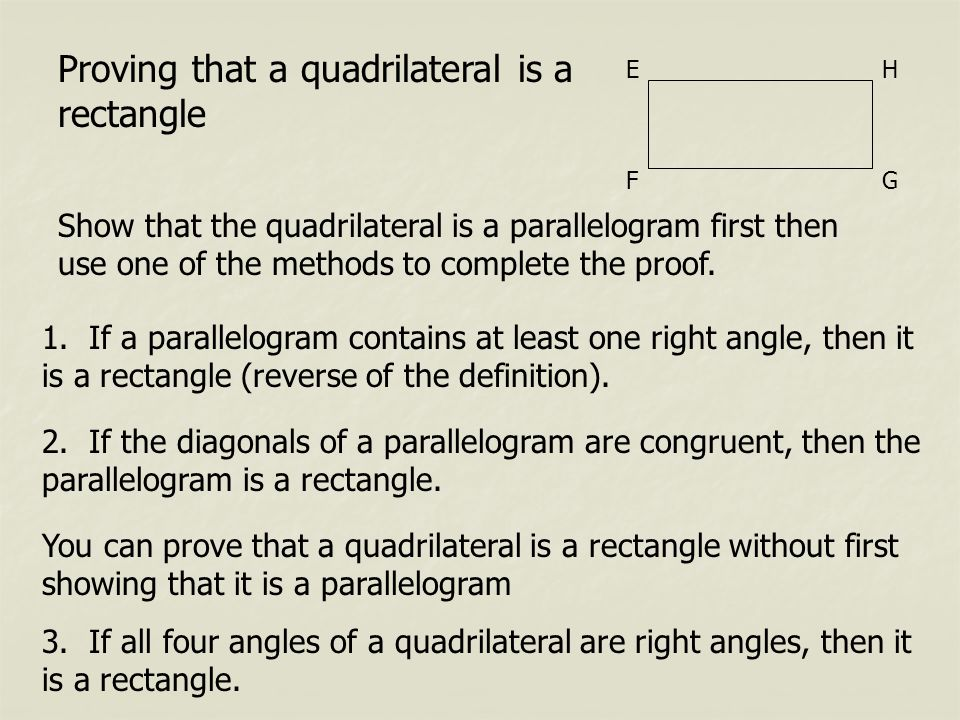
U6: Rhombus (characteristics/how to prove)
A quadrilateral with four congruent sides and 4 congruent angles
4 congruent sides
4 congruent angles
Paralleogram
Diagonals are perpendicular bisectors
Bisect eachother
Form right angles
NOT equal
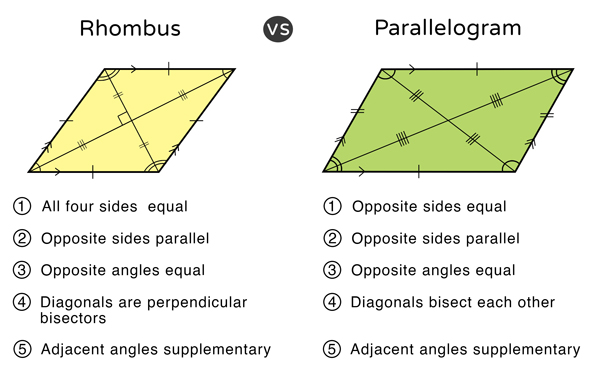
U6: Trapezoid (characteristics/how to prove)
A quadrilateral with exactly one pair of parallel sides
NOT a paralleogram (only one pair parallel)
Non parallel sides = legs, parallel sides = bases
the diagonals are generally not congruent and do not bisect each other
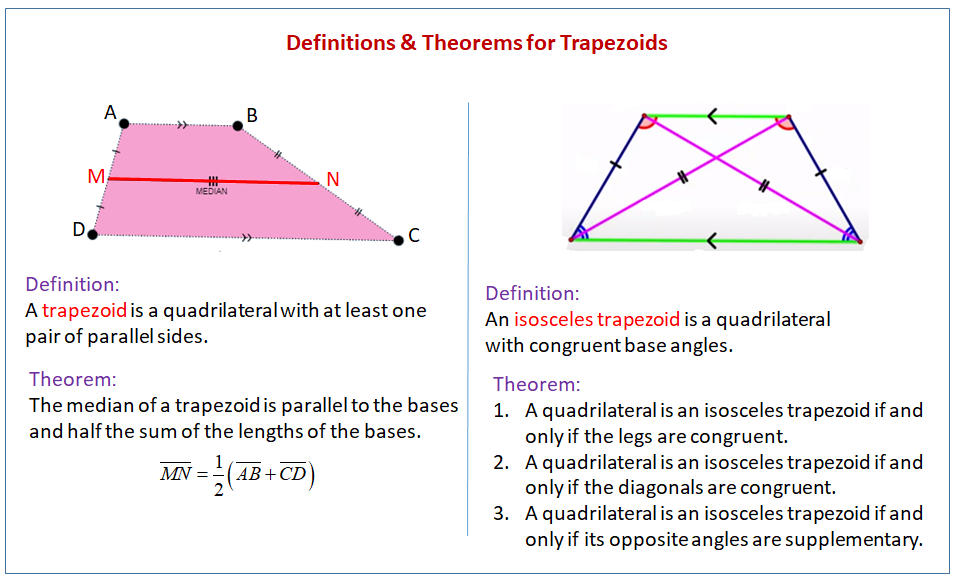
U6: Isosceles Trapezoid
An isosceles trapezoid is a trapezoid where the two non-parallel sides (legs) are equal in length. This also means that the base angles are congruent (equal in measure).
One pair of parallel and unequal opposite sides (bases
One pair of congruent non parllel sides (legs
Diagonals are congruent
Do not bisect eachother
Any lower base angle is supplementary to any upper base angle
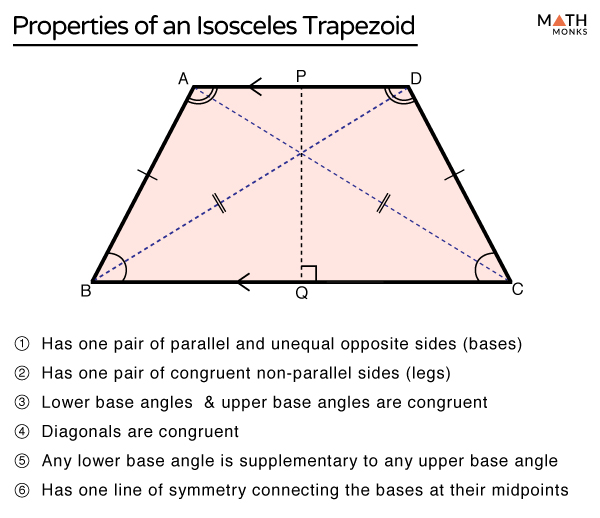
U6: Square
A quadrilateral with 4 congruent sides and 4 right angles
is also (by definition) a rectangle and a rhombus
Characteristics:
Four equal sides
Four right angles
Diagonals are equal in length:
Diagonals are perpendicular bisectors
A square is a rhombus so it shares the same characteristics, diagonals are perpendicular bisectors
Regular polygon: Because all sides and angles are equal, a square is a type of regular polygon.
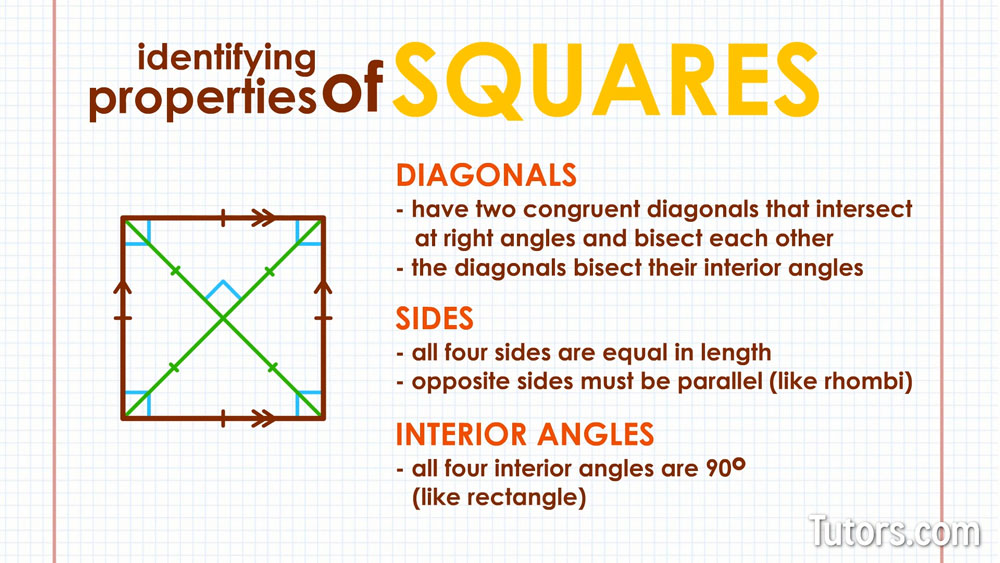
U6: Area of a regular pentagon
(Apothem x perimeter)/2
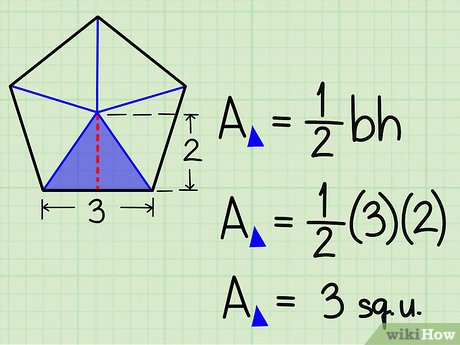
U6: Equation for the rhombus perimeter (in terms of diagonals)
2√p2+q2
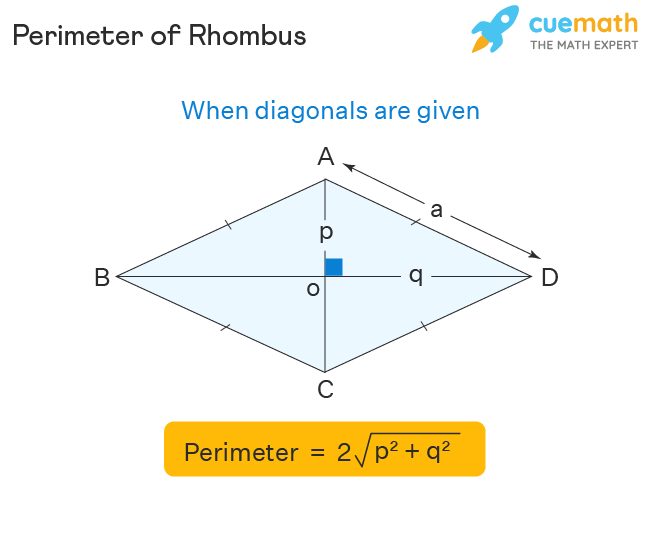
U6: Ways to prove a quadrilateral is a parallelogram
1) Prove both pairs of opposite sides are congruent:
2) Prove both pairs of opposite sides are parallel:
3) Prove one pair of opposite sides is both congruent and parallel:
4) Prove that the diagonals bisect each other:
5) Prove that opposite angles are congruent:
6) Prove consecutive angles are supplementary:
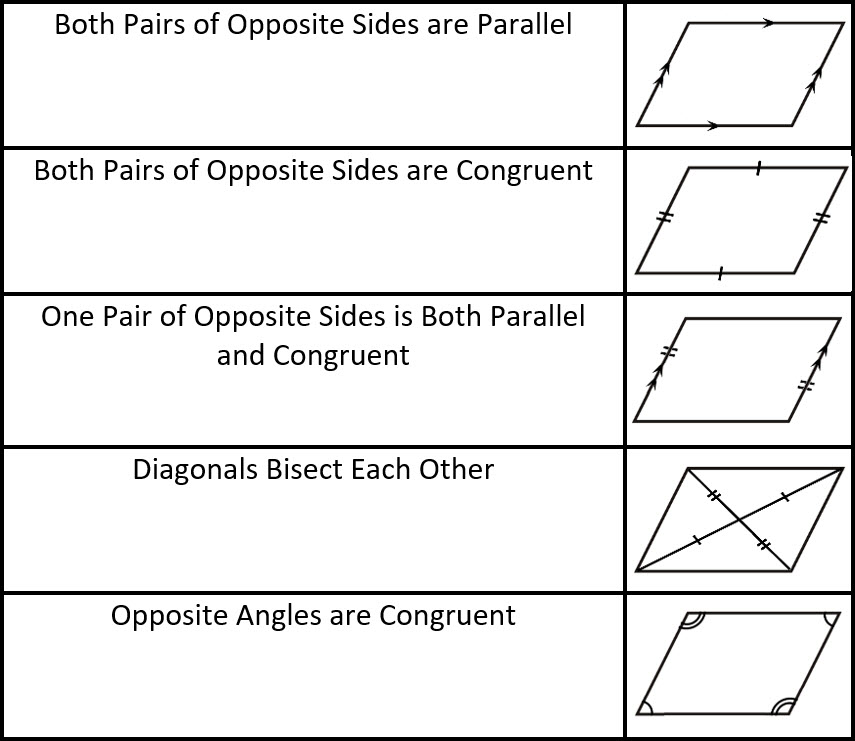
U6: Midsegments of Triangles
Segment between midpoints of 2 sides of a triangle, they are parallel to the opposite side and are half the length of the side they are parallel to
if all midsegmnets are constructed, the perimeter is ½ the actual permimiter
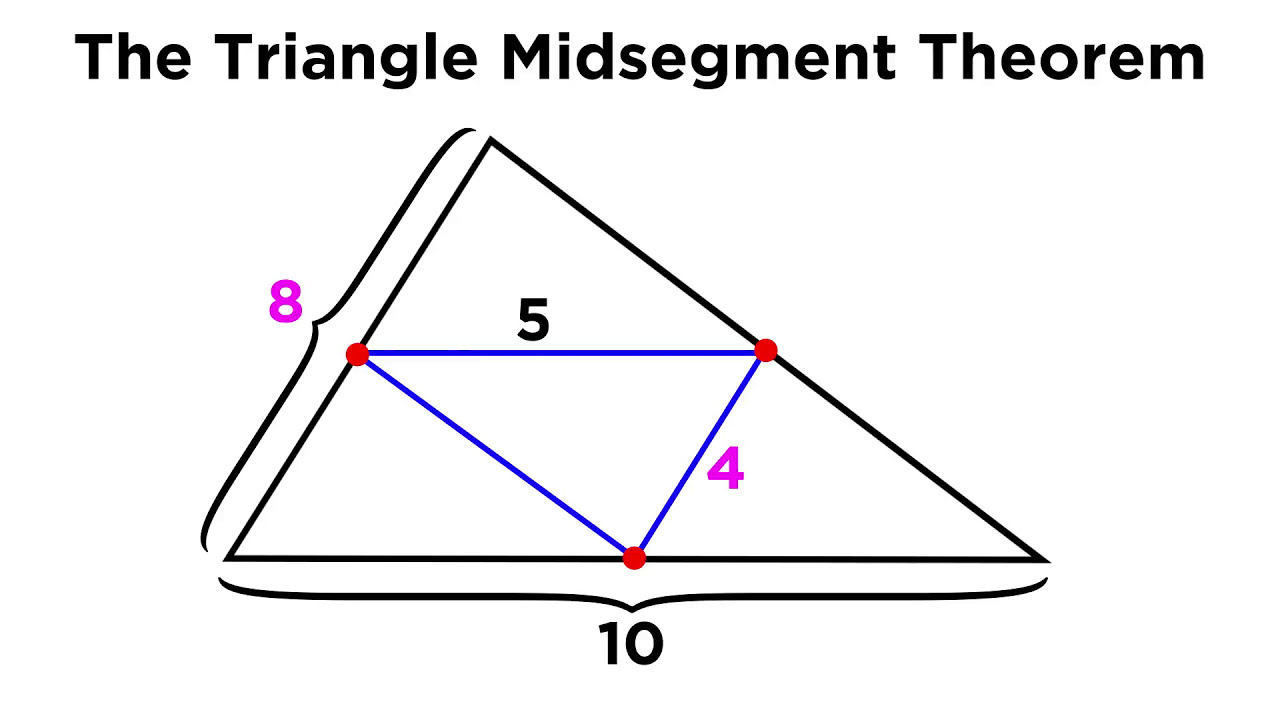
U6: If a paralleogram has congruent diagonals, its a _______ If it has perpendicular diagonals, its a ____, if both it is a ______.
Congruent = Rectangle
Perpendicular = Rhombus
Both = Square

U6:
U6: Consecutive Angles
Angles in a polygon next to eachother are called consecutive angles, which are supplementary.